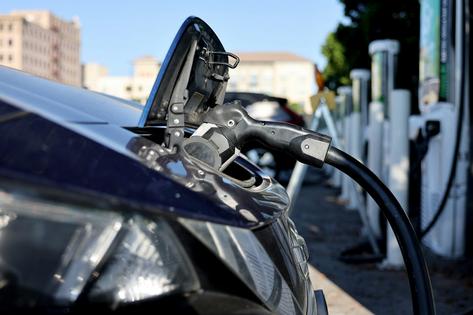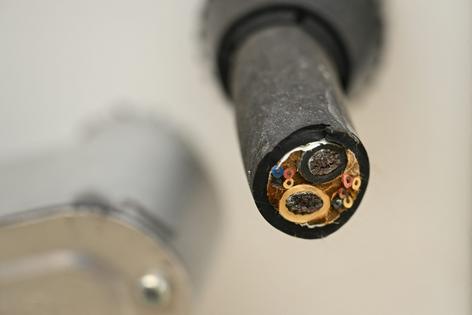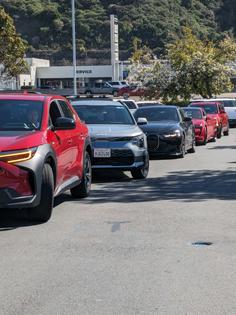Charging, not range, is becoming a top concern for electric car drivers
Published in News & Features
The Biden administration is using tax credits, regulations and federal investments to shift drivers toward electric vehicles. But drivers will make the switch only if they are confident they can find reliable charging when and where they need it.
Over the past four years, the number of public charging ports across the U.S. has doubled. As of August 2024, the nation had 192,000 publicly available charging ports and was adding about 1,000 public chargers weekly. Infrastructure rarely expands at such a fast rate.
Agencies are allocating billions of dollars authorized through the 2021 Bipartisan Infrastructure Law for building charging infrastructure. This expansion is making long-distance EV travel more practical. It also makes EV ownership more feasible for people who can’t charge at home, such as some apartment dwellers.
Charging technology is also improving. Speeds are now reaching up to 350 kilowatts – fast enough to charge a standard electric car in less than 10 minutes. The industry has also begun to shift to a standard called ISO 15118, which governs the interface between EVs and the power grid.
This standard enables a plug-and-charge system: Just plug in the charger and you’re done, without contending with apps or multiple payment systems. Many existing chargers can be retrofitted to it, rather than needing to install totally new chargers.
Tesla’s decision to open its reliable Supercharger network to non-Tesla vehicles promises to further expand access to fast chargers, although this shift is proceeding slowly.
As a researcher studying adoption of EVs, I’m encouraged by these advancements. But there’s still a need to make the charging experience more reliable and accessible for everyone. Stories of charging woes abound online and are a popular focus for EV critics. Here are the key issues drivers are confronting.
Although EV charging infrastructure has improved in the past several years, reliability is still a critical issue. For example, a 2022 study by researchers at the University of California, Berkeley, found that nearly 30% of public non-Tesla fast chargers in the Bay Area didn’t work. A national study in 2023 that used artificial intelligence models to analyze driver reviews of EV charging stations reached a similar result.
These findings highlight the need for more robust maintenance and monitoring systems across charging networks. Federal guidelines require that chargers must have an average annual “uptime,” or functional time, greater than 97%, but this metric is not always as clear-cut as it sounds. While many charging-point operators report high uptime percentages, their figures often exclude factors such as slow charging speeds or incomplete charges that degrade users’ experience.
Many drivers complain about throttling – chargers that dispense electricity at less than the maximum rate the car is capable of accepting, so the car charges more slowly than expected. Sometimes this is normal: Cars will charge more slowly as their battery gets closer to full in order to avoid damaging the battery. Other factors can include weather conditions and the number of other vehicles simultaneously using the charging station.
Drivers’ issues with chargers involve more than just uptime. Technical barriers, such as payment processing and vehicle-charger communication, sometimes can prevent a charge from starting or completing.
To ensure that all EVs can charge smoothly at any network, groups such as the National Charging Experience Consortium and CharIN are bringing automakers, charging providers and national laboratories together to address these issues.
Other obstacles are more local, such as long lines at charging stations and chargers that are blocked by parked cars, snowbanks or other obstacles. Finding vehicles with internal combustion engines parked in EV charger spots is common enough that it has a name: getting ICEd. There’s a clear need for more comprehensive solutions to help the charging experience keep pace with demand for EVs.
At the University of California, Davis, we are working with the California Energy Commission to understand the range of charging obstacles that EV drivers face. As part of a three-year study, we are sending undergraduate students out to test thousands of chargers across the entire state of California.
So far, our results show that just over 70% of charge attempts have succeeded. Many issues have caused failed charges, including traffic congestion at charging stations, damaged or offline chargers, difficulty using navigation apps to find charging stations, and malfunctioning chargers.
As federal investments continue to pour money into EV charging, our findings indicate that it’s important to use these resources not only to expand the network but also to improve the user experience at every step.
Areas for improvement include stricter oversight of charger maintenance; more robust uptime requirements that reflect real-world performance; and better collaboration between automakers, charging-point operators and software providers to ensure that vehicles and chargers can work together seamlessly.
The future of EV adoption depends not just on how many chargers are available, but on how reliable and easy they are to use. By addressing specific pain points that drivers face, policymakers and industry leaders can create a charging ecosystem that truly supports the needs of all EV drivers. Reliability is key to unlocking widespread confidence in the EV charging infrastructure and ensuring that it can keep pace with the growing number of electric vehicles on the road.
This article is republished from The Conversation, a nonprofit, independent news organization bringing you facts and trustworthy analysis to help you make sense of our complex world. It was written by: Alan Jenn, University of California, Davis
Read more:
Right-to-charge laws bring the promise of EVs to apartments, condos and rentals
EV sales growth points to oil demand peaking by 2030 − so why is the oil industry doubling down on production?
How electric cars can advance environmental justice: By putting low-income and racially diverse drivers behind the wheel
Alan Jenn receives funding from the California Energy Commission and is a participant in the National Charging Experience Consortium (ChargeX)













Comments